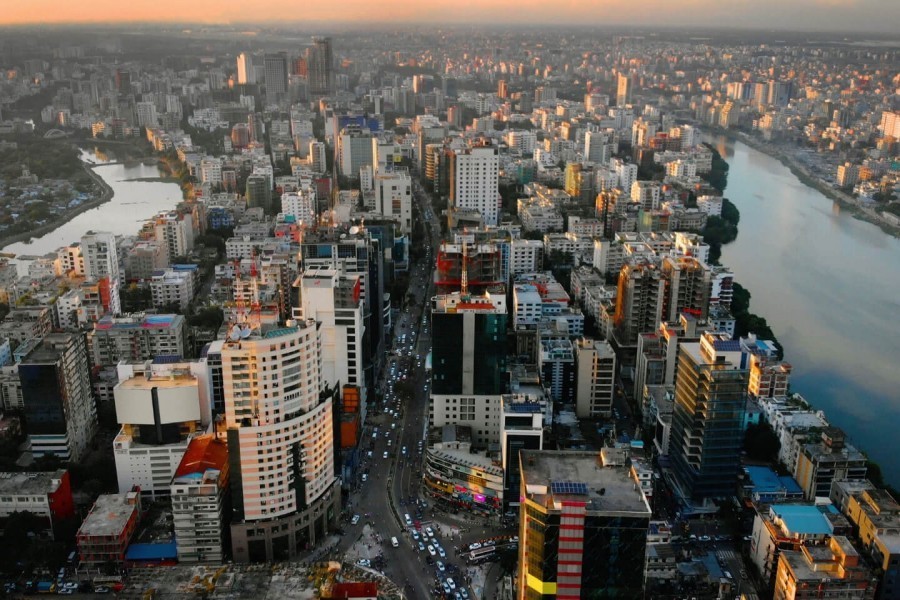After years of debates, arguments and counter-arguments over the Detailed Area Plan (DAP) for Dhaka city, the gazette notification has been issued containing its final version. Eying the 20-year time-limit (2016-2035), the revised DAP has reportedly kept in perspective the new realities that surfaced in the 1,528-square kilometre area under it. That a fresh DAP has been issued by the ministry concerned replacing the previous one, approved in 2010, is apparently welcome news. The avowed aim of the new master plan of DAP is to ensure a 'planned urbanisation' of Dhaka. But after leafing through the salient features contained in the new urban reform plan for large chunks in the long neglected areas of Dhaka, few of the stakeholders are convinced of any real breakthrough.
Prior to the release of the full details of the new DAP, supposed to be focused on certain areas' topographical features, many harbouring lofty dreams about certain areas seem to have misgivings about the prospect. The situation as it stands on the eve of the full launch of the DAP smacks of disagreements, misunderstandings with the parties going their own ways. In the final episode, the implementing agency RAJUK, working at the behest of the Ministry of Housing and Public Works, may find itself isolated and failing in almost all its otherwise noble programmes. With the three parties --- RAJUK; the realtors targeting the government-owned fallow lands and marshes; and the town planners, in the fray, and all being at cross-purposes, there are spectres of yet another exercise in futility, finally leading to waste of the exchequer's money. The large swathes of barren lands and water bodies in the areas close to the busy city have long been wearing a metamorphosed look. The once deserted low wetlands are now filled with high-rise condominiums, apartments, non-government and state-run offices, amusement centres, malls and entrepreneurs running varieties of activities. According to urban planners, the fallow lands and the flood water retention swamps on the edges of a growing metropolis are a sine qua non.
To the woes of the Dhaka dwellers residing in the far-west and east of the city, few stretches of government land remain free of encroachment. They are earmarked for future human habitats in the forms of 'satellite towns' and other projects hindering the outflow of Dhaka's floodwater into the adjacent rivers. The real estate sector has its own worries. In the new DAP, the provision of height-cap for commercial and residential buildings is said to have been inserted in the plan. According to the realtors, if the RAJUK and DAP do not reconsider the buildings' height-cap, the way out would be the city's horizontal growth. According to them, it will mean expansion onto the nearby agro-lands. As per common wisdom, it cannot be an effective way to alleviate urban population density.
Dwelling on RAJUK's obsessive focus on the reduction of population density in Dhaka, an urban planner feels puzzled. As he feels, the bid to lessen urban density invariably returns to one irrational solution - forcing people to go to areas far from the urban mainstream. It might then necessitate the criterion to decide who will be eligible to live in Dhaka and who will not. One hopes RAJUK doesn't entangle itself in these complications. This will only convolute the chief DAP goal: Building a liveable and citizen-friendly city.


